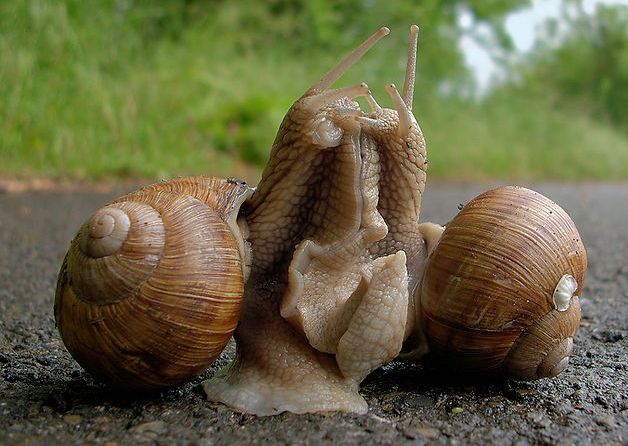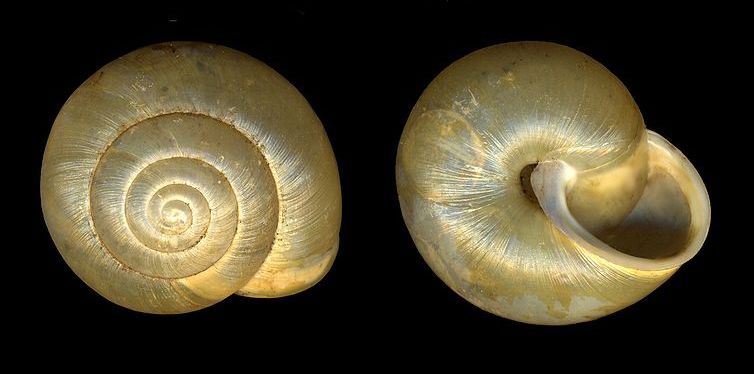Reproduction
As Patera clenchi belong to the larger taxon of land
snail Stylommatophora, they possess many of the common reproductive
characteristics of the group (Wilbur, 1984). The Patera clenchi is a
hermaphroditic species of snail producing both ova and sperm through the
ovitestis they possess (Wilbur, 1984). The ovitestis is even capable of
producing both gametes simultaneously although it does not always do so (Wilbur,
1984). Although it is theoretically possible, hermaphroditic land
snails like the Patera clenchi do not self fertilize. Rather, they find
a mate and undergo a courtship ritual that can last for hours (Hickman
et al.,
2011).

In many species of snails, the
mating ritual can be somewhat brutal. Some species shoot spikes into
each other before copulating (Wilbur,
1984). The family Polygyridae, and thus Patera clenchi, have lost
these calcareous darts removing that aspect of the mating ritual (Pilsbry,
1940). When the two mates do finally copulate, there is a cross
fertilization with each receiving the other’s sperm via simultaneous
penetration with their penises (Hickman
et al., 2011). This promotes genetic variation and helps to avoid
deleterious mutations that are often observed in asexual species (Hickman
et al., 2011). After each mate has had their eggs fertilized, there
is an incubation period where the eggs are allowed to stay in the adult
(Wilbur,
1984). After a few days though, the snail will dig a hole where its
eggs will be laid then covered up again (Hickman
et al., 2011). Although no land snails are known to lay their eggs
in water, moist soil is almost always prefered (Wilbur
1984).
Since the Patera clenchi have a direct life cycle, there is no larval form for the fertilized eggs (Wilbur, 1984). In 2 to 4 weeks, a portion of the eggs successfully hatch and the juvenile snails crawl up from the ground (Wilbur, 1984). In about a year, the juveniles will reach sexual maturity and be able to engage in the sexual process themselves (Wilbur, 1984).
Although snails are successful at reproduction, they are still part of the food chain and do not have the best interactions with some other organisms!
Go
Home
